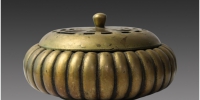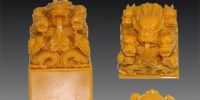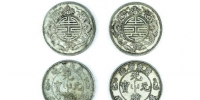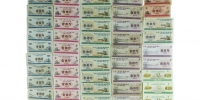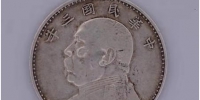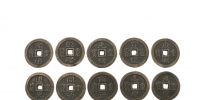2019年展销精品清代银币推荐
成都博古轩拍卖有限公司【藏 . 荐】栏 为藏品强大的传播效应向各位买家推荐经国家一级鉴定专家甄选的艺术珍品 , 为藏家牵线搭桥 , 让千百件艺术珍品价值被发掘与重视 , 在拍卖会上得以高价成交。
Chengdu Boguxuan Auction Co., Ltd. [Tibet. Recommendation] column recommends art treasures selected by experts at the first level of national appraisal to buyers for the powerful dissemination effect of the collection. It helps collectors to bridge the gap, so that the value of thousands of art treasures can be excavated and valued, and high prices can be concluded at the auction.
【名称】:光绪元宝(广东省造库平重拾两)
【名称】:光绪银币(丁未年)
【规格】 :重量: 141g 直径: 8.7cm
【规格】: 重量:143.5g 直径:8.7cm
Name] Guangxu Yuanbao
[Name]: Guangxu Silver Coin (Ding Weinian)
[Specification] Weight: 141g diameter: 8.7cm
[Specification] Weight: 143.5g Diameter: 8.7cm
银元俗称“大洋”、“洋钱”或“花边钱”。银元起源于15世纪的欧洲,是银本位制国家的主要流通货币。
大约在明万历(1573年-1620年)年间银元流入中国。清乾隆五十八年(1793年),清政府首次在西藏铸行“乾隆宝藏”银币。道光(1821年-1850年)年间,台湾福建等地也曾仿制银圆,称为银饼。光绪十六年(1890年)清廷开始正式铸造银元“光绪元宝”(即龙洋),各省纷起效尤。 [1] 民国时期建立银本位货币制度以后,也以银元作为主要流通币。银元是近代币收藏的重要币种之一。
晚清流入中国的外国银元还有:英国贸易银元,因币面铸有一个持杖的不列颠女神站像,俗称 人洋 或 站洋 、 站人 (是英国在印度境内和在香港专为在中国境内流通而铸造的一种银元,背面铸有中国图案花纹及中文“壹圆”两字。该币由香港、新加坡、上海等地的英国银行发行,总共发行约1.5亿枚,流行于两广、闽浙、沪宁一带);日本银币,因币面有龙纹,俗称 龙洋 或龙番;其他尚有美国的贸易银元、法国的安南银元等。
广东省造双龙寿字光绪元宝一枚,此币铸于光绪三十一年(1905)初,为纪念慈禧七十寿辰而铸。张炯伯在《广东省造银币》一文中写道:“惟本品因未纪年,殊难遽断,然观其图案,谐作福寿,环绕双龙,幕无英文,意含颂祝,大异常制。由此以推,成为纪念币之一种,专铸以祝慈禧太后七旬万寿者也。
此银币是大清库银也是典账银,民间罕见至极,并非流通银币,藏品的品相精致,作为银元“十大珍”之首,它的历史和收藏很高,可遇不可求,此乃绝世精品,值得收藏。
Silver yuan is commonly known as "ocean", "foreign money" or "lace money". The silver dollar originated in Europe in the 15th century and is the main currency in circulation in the silver standard countries.
Around the Ming Dynasty (1573-1620), silver dollars flowed into China. In the fifty-eighth year of Qianlong in the Qing Dynasty (1793), the Qing government first minted the "Qianlong Treasure" silver coin in Tibet. During Daoguang (1821-1850), Taiwan, Fujian and other places also imitated silver round, known as silver cakes. In the 16th year of Guangxu (1890), the Qing Dynasty began to formally cast the silver yuan "Guangxu Yuanbao" (Longyang), which was followed by many provinces. [1] After the establishment of the silver standard monetary system in the Republic of China, silver dollar was also used as the main currency in circulation. Silver dollar is one of the most important currencies in modern coin collection.
Other foreign silver dollars flowing into China in the late Qing Dynasty were: British trade silver dollars, which had a sceptre-supporting statue of the British goddess standing on the surface of the coin, commonly known as the Ocean or the Ocean-standing person (a silver dollar coined by the United Kingdom for circulation in India and Hong Kong in China, with Chinese patterns and the Chinese word "one circle" on the back. This is the case. The currency is issued by British banks in Hong Kong, Singapore, Shanghai and other places, totaling about 150 million, and is popular in Guangdong, Fujian, Zhejiang and Shanghai; Japanese silver coins, commonly known as Longyang or Longfan because of the dragon pattern on the surface of the currency; others include American trade silver dollar and French Annan silver dollar.
Guangxu Yuanbao, a double dragon longevity coin in Guangdong Province, was coined at the beginning of the 31st year of Guangxu (1905) to commemorate the 70th birthday of Cixi. Zhang Jongbo wrote in the article "Silver coins in Guangdong Province": "However, due to the lack of age, this product is very difficult to break, but look at its pattern, harmoniously make a happy life, surround the Shuanglong, the curtain has no English, meaning praise, great abnormality system. As a result, it has become one of the commemorative coins, especially for those who wish Empress Dowager Cixi a longevity of seventy days.
This silver coin is the Treasury silver of the Qing Dynasty and also the pawn silver. It is rare among the people and can not be sought. It is a world-class boutique and worth collecting.


